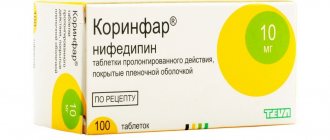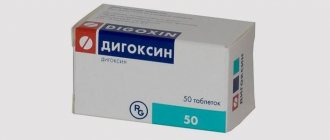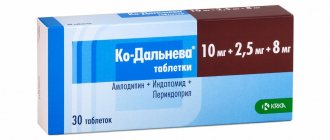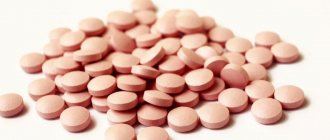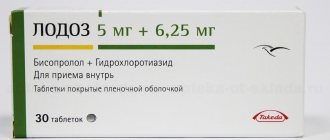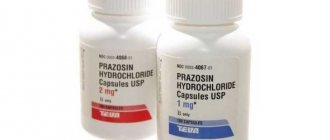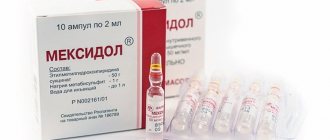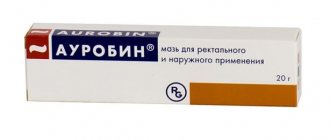Release form and description of the drug
The drug for hypertension Lortenza is available exclusively in the form of tablets, which are coated with a special coating. Tablets have several basic dosages:
- The medication is offered in dosages of 5 mg + 50 mg: each tablet has an oval, biconvex shape, covered with a film coating, which has a characteristic light brownish-orange tint.
- Lortenza tablets with a dosage of 10 mg + 50 mg also have a biconvex oval shape, covered with a special coating, having a brownish-red tint.
- The tablet with a dosage of active components of 5 mg + 100 mg has a convex oval shape, coated with a characteristic pink tint.
- Lortensa 10 mg + 100 mg tablets are film-coated with a yellowish-brown tint. The tablet has an oval, biconvex shape.
If you break a tablet, regardless of the type of dosage, then on the break you can see a slightly rough consistency, which has two layers: light white and light yellow.
Composition of the drug
The drug contains two active components: amlodipine and losartan, the dosage of which depends on their ratio.
Each 5 mg + 50 mg tablet contains Lortazan 50 mg and Amplodipil 5 mg. This also includes additional components that are the same for all dosages of the drug:
- cellactose;
- magnesium stearate;
- yellow dye;
- microcrystalline cellulose;
- pregelatinized starch;
- sodium carboxymethyl starch.
A tablet with a dosage of 10 mg + 50 mg contains active ingredients: amplodipine 10 mg and losartan – 50 mg. Additional components are similar to the first option.
The 5 mg + 100 mg tablet contains 5 mg ampodipine and 100 mg losartan. The excipients included in the medicine are the same as in the first two options.
Lortenza 10 mg + 100 mg tablet contains 10 mg amplodipine and 100 mg losartan. The additional elements included in the medication do not differ from the options described above.
Contraindications
Lortenza tablets are well tolerated by patients. However, there are a number of certain contraindications that must be taken into account before taking the medication.
- Patients under 18 years of age should not take the pills.
- The use of the medicine is prohibited for persons suffering from pathologies such as liver failure, a complex form of arterial hypotension and acute renal dysfunction.
- Pregnant and breastfeeding women should also not take the tablets.
- Contraindication is severe sensitivity to any components of Lortens.
- People suffering from various types of shock, in particular cardiogenic shock, should not take the medicine.
- The use of tablets should be limited to people who have severe heart failure following a recent myocardial infarction.
- Also, the use of the drug should be avoided if the patient has lactose intolerance or a deficiency of lactase in the body.
- The use of the medication should be limited to persons on hemodialysis.
- People who suffer from renal vascular stenosis should refrain from taking it.
Lortenza tablets indications and contraindications
According to the annotation, the drug is recommended for use in the treatment of patients with arterial hypertension.
Prohibitions for use are:
- Reduced blood pressure.
- Severe liver failure.
- A heart defect in which there is a narrowing of the aortic opening, which creates an obstacle to the expulsion of blood into the aorta during contraction of the left ventricle.
- Pregnancy.
- Renal dysfunction.
- Cardiogenic shock (left ventricular failure, which is characterized by a rapid decrease in the contractility of the heart muscles).
- Glucose-galactose malabsorption syndrome, provoked by inadequate absorption of monosaccharides in the gastrointestinal tract.
- Lactase deficiency (hereditary or acquired pathology, which is characterized by the absence or reduced content of the lactase enzyme).
- Age up to eighteen years.
- Breast-feeding.
- Individual intolerance.
- Low level of circulating blood volume.
- Severe heart disease.
- Cerebrovascular diseases (brain damage caused by gradual progressive damage to brain tissue against the background of chronic cerebrovascular accident).
- Angioedema (an acute condition characterized by the rapid development of local swelling of the mucous membrane, subcutaneous tissue and the skin itself).
- Primary hyperaldosteronism (endocrine pathology, which is characterized by increased secretion of aldosterone).
- Stenosis of the artery of a single kidney (narrowing of the lumen of the vessel caused by congenital causes, atherosclerosis, inflammatory changes).
- Unstable angina (a disease that occurs when myocardial circulation is impaired due to narrowing of the coronary artery).
- Cardiac ischemia (damage to the heart muscles, which is caused by a deficiency or cessation of microcirculation of the heart muscle).
- Acute myocardial infarction (ischemic heart disease, which occurs with the death of the heart muscles, caused by an absolute or relative deficiency of its microcirculation).
- Hyperkalemia (a disease that causes abnormally high levels of potassium in the blood).
- Arterial hypotension (a common pathological condition that is manifested by a regular, persistent tonometer reading below normal).
- Liver failure.
- Tachycardia (sharp increase in heart rate, a sign of serious disorders).
- Severe bradycardia (a type of sinus rhythm disorder controlled by the sinus node).
- An autosomal and dominant lesion, which is characterized by an increase in the wall of the left and, occasionally, the right ventricle.
- Elderly age.
Lortenza: drug analogues
Currently, there are many drugs that are analogues of Lortens. Some of them also contain the active substances losartan and amplodil, and there are also incomplete substitutes, where in addition to amplodin, there are other angiotensin II inhibitors.
So, what substitute can you choose:
- the most popular analogue is Amzaar or Amosartan tablets, which contain exactly the same active ingredients as Lortenza;
- less cheap substitutes are: Twinsta, Aprovask, Vamloset and Exforge;
- Often, Dalneva, Bisam, Amlonorm, Vazotenz, Zisacar, Lozap, Losakor, Rasilam tablets are prescribed to replace Lortens.
Pick up analogue It’s not difficult, the main thing is to first consult with your therapist.
Side effects
In most cases, Lortenza is easily tolerated by patients, but sometimes side effects develop in the form of:
- leukopenia;
thrombocytopenia;- anemia;
- urinary tract infections;
- vasculitis, including hemorrhagic;
- hyperglycemia;
- angioedema;
- anaphylactic reactions;
- depressive states;
- headaches and dizziness;
- sleep disorders;
- cough;
- skin itching and urticaria;
- convulsive muscle spasms;
- myalgia;
- arthralgia;
- general malaise.
Overdose
There is currently no detailed information about overdose of the drug Lortenza. However, it is known that with monotherapy, an overdose of losartan and amlodipine leads to negative consequences.
When taking increased doses of amlodipine, the following conditions develop:
- significant decrease in blood pressure;
- reflex tachycardia.
An overdose of losartan can lead to:
- tachycardia;
- bradycardia;
- lowering blood pressure.
In these cases, it is necessary to perform an urgent gastric lavage, then take activated charcoal and begin symptomatic therapy.
Cardiac arrhythmia is a common and dangerous disease for human life and health. Find out about its symptoms and treatment:
- Common causes and symptoms of arrhythmia.
- Effective methods of treating cardiac arrhythmia.
Lortenza: price of the drug
It should immediately be noted that this medication, unlike many of its analogues, is sold in pharmacies exclusively according to doctor’s prescriptions. Therefore, it will not be possible to find the drug on the open market. Moreover, the price of the tablets will directly depend on the proposed dosage and the region of sale.
The average price for Lortenza is:
- 5 mg/50 mg tablets can be purchased at prices starting from 240 rubles for 30 tablets and from 540 rubles for 90 tablets per package;
- the price for tablets 5 mg/100 mg is from 760 rubles for 90 pieces per package and from 380 rubles for 30 tablets;
- Lortenza with a dosage of 10 mg/50 mg costs from 760 rubles for 90 tablets and from 320 rubles for 30 tablets;
- the cost of Lortenza 10 mg/100 mg (90 tablets) is from 790 rubles, 30 tablets – from 450 rubles.
Lortenza: instructions for use and dosage
It is enough to take 1 tablet daily, regardless of the time of eating. It is enough to take the drug with plenty of water.
Recommended dosages:
- 5 mg/50 mg is prescribed to patients who do not have adequate blood pressure control while taking amplodipine (5 mg) or losartan (50 mg);
- 5 mg/100 mg are prescribed to patients who do not experience improvement in blood pressure reduction when taking losartan (100 mg) or Lortenza with a dosage of 5/50 mg;
- 10 mg/50 mg of the drug is prescribed if the patient has no improvement in lowering blood pressure while taking amplodipine (10 mg) or Lortenza with a dosage of 5/50 mg;
- 10 mg/100 mg of the drug is prescribed when the patient does not have adequate blood pressure control while taking Lortensa 5/100 mg or 10/50 mg.
The maximum daily dose of the drug should not be higher than 10 mg + 100 mg. If necessary, the dosage can be adjusted by the doctor, taking into account the patient’s personal data.
Mode of application
According to the annotation, the drug is taken orally, regardless of food intake, with water. Dosage is 1 tablet per day. Lortenza (5+50 milligrams) is used when monotherapy with Amlodipine and Losartan does not lead to stable blood pressure control.
Dosing is determined by titrating the dosage of the active substance of the drug. If it is necessary to adjust the concentration of one of the active components in the composition of a fixed combination medication.
Possible adverse reactions from the body
Despite the fact that in most cases the drug is well tolerated by patients, in case of an overdose or the presence of personal intolerance to one of the components of the drug, the following side effects can sometimes be observed.
Disorders arising from the nervous system, which manifest themselves as follows:
- migraine;
- sleep disturbance;
- tremor;
- paresthesia;
- lethargy;
- drowsiness;
- prostration;
- lack of performance;
- headache;
- hypoesthesia.
Mental disorders :
- anxiety;
- confusion;
- insomnia;
- depression;
- apathy.
Infectious pathologies such as genitourinary tract infections may develop.
Metabolic problems and disorders in the digestive :
- loss of appetite;
- hyperglycemia;
- pain in the abdominal area;
- nausea;
- diarrhea;
- constant thirst;
- gastritis;
- dyspepsia;
- pancreatitis.
Reactions from the organs of vision and hearing may also occur, which manifest themselves as follows:
- there is tinnitus;
- vision deteriorates;
- vertigo;
- diplopia.
Heart failures often occur :
- tachycardia;
- atrial fibrillation;
- myocardial infarction;
- arrhythmia.
Reactions from the respiratory :
- rhinitis;
- systematic cough;
- severe shortness of breath.
Taking the medication can cause abnormalities in the functioning of the liver and biliary system:
- jaundice;
- hepatitis;
- very rarely: the functioning of the basic functions of the liver is disrupted;
- increased activity of liver enzymes.
Allergic reactions:
- hives;
- rash on areas of the skin;
- increased sweating;
- itchy skin;
- dermatitis;
- Stevens Johnson sign;
- exudative erythema.
Malfunctions of the vascular system:
- frequent flushes of blood;
- orthostatic hypotension;
- obvious decrease in blood pressure;
- vasculitis
General violations:
- malaise;
- fatigue;
- syndromes similar to colds;
- asthenia;
- nosebleeds;
- increase/decrease in body weight.
As you can see, Lortens has a lot of side effects, so it is very important to have a preliminary consultation with a specialist before taking the pills. Side effects, as a rule, disappear immediately after stopping the drug.
Possible side effects
The medicine contains 2 active substances, so the possibility of adverse reactions doubles. These may include:
- dizziness, tinnitus, headaches;
- drowsiness, fatigue;
- immune reactions (anaphylactic shock, vasculitis);
- mental disorders (anxiety, bad mood);
- worsening sleep;
- violation of taste perception;
- problems with hematopoiesis (thrombocytopenia, anemia, leukopenia);
Leukopenia
- hyperglycemia;
- tremor;
- numbness of body parts;
- peripheral neuropathies;
- visual disturbances;
- cardiac abnormalities (palpitations, angina, bradycardia, tachycardia, atrial flutter);
- decrease (dose-dependent) in blood pressure;
- hyperemia;
- the occurrence of cough, rhinitis;
- digestive problems (vomiting, nausea, dyspeptic disorders, constipation and diarrhea, pain in the abdominal area);
- gastritis, pancreatitis, hepatitis, jaundice;
- allergic manifestations on the skin (redness, itching, rashes, urticaria, erythema, Quincke's edema);
- convulsive conditions;
- pain in the back, muscles and joints;
- problems with urination;
- deterioration of erection in men;
- swelling (including of the nose, larynx, pharynx, tongue);
- flu-like symptoms;
- hyperkalemia;
- hyponatremia;
Hyponatremia
- weight gain.
Overdose can provoke a systemic decrease in blood pressure, reflex tachycardia and cardiogenic shock. Such conditions often lead to death.
See also:
Instructions for use and analogues of the drug Giposart
Reviews
It should be noted that Lortenza is considered one of the most effective drugs among analogues, thanks to which it has won many positive reviews from real patients. Despite the fact that there are not many reviews about the drug on the Internet, those that come across speak only in favor of the drug.
I would like to say that all medications that are necessary to lower blood pressure are prescribed by doctors using a personal selection method. This was the case in my case when I was prescribed Lortenza. The doctor prescribed a personal treatment regimen for me and it really helped me get rid of my problem in a few weeks. My review is definitely in favor of this medication!
Ekaterina S.
I have been taking Lortenza for over one year now. I can say that he really keeps his blood pressure normal. However, sometimes there are some unpleasant effects. For example, my sleep has deteriorated greatly, my mouth is constantly dry, and small blood vessels began to appear on my legs. In all other respects, the drug is not bad and it performs its function.
Olga O.
My mother started taking these pills at the age of 68. It is difficult to say for sure that the drug has no side effects or is potent. We'll see after the prescribed course of treatment is completed. So far, the first week of treatment is encouraging with its results - the mother’s blood pressure really began to drop, but she began to develop tachycardia. Most likely, this is one of the side effects of the drug.
Alena F.
Reading every review about the drug, we can conclude that it works, but it has a number of side effects that may manifest themselves in the case of some patients.
Lortenza®
Patients with reduced blood volume or severe aortic stenosis
In patients with reduced blood volume (for example, when taking high doses of diuretics, severe diarrhea, vomiting and other conditions leading to hypovolemia) or with severe aortic stenosis, symptomatic arterial hypotension may develop at the beginning of therapy with Lortenza®. Correction of such conditions should be carried out before starting therapy or treatment should be started with a lower dose of Lortenza®. For patients whose daily dose of losartan is 25 mg, the use of Lortenza® is not recommended (see section "Dosage and Administration").
Special instructions and precautions related to amlodipine
Due to the prolonged T1/2, vasodilation that develops as a result of taking amlodipine may persist even after its discontinuation. Thus, the use of another vasodilator after discontinuation of amlodipine should be done with caution, individual assessment of the dose, dosing interval and active monitoring of the patient's condition are necessary.
During the treatment period, it is necessary to control body weight and salt intake, and prescribe an appropriate diet. It is necessary to maintain dental hygiene and frequent visits to the dentist (to prevent soreness, bleeding and gum hyperplasia).
Unstable angina and myocardial infarction
After initiating therapy or increasing the dose of amlodipine, unstable angina and acute myocardial infarction may develop, especially in patients with severe HOCM.
Special instructions and precautions related to losartan
Hyperkalemia (plasma potassium content > 5.5 mmol/l) was observed in 1.5% of patients taking losartan as monotherapy. In none of these cases did the drug need to be discontinued. Concomitant use of potassium-sparing diuretics (for example, spironolactone, triamterene, amiloride, eplerenone),
potassium preparations, potassium-containing salt substitutes, as well as drugs, the use of which can lead to an increase in the level of potassium in the blood plasma (for example,
heparin),
with losartan should be justified (especially in elderly patients with impaired renal function), and the level of potassium in the plasma blood should be under control.
While taking losartan, patients should not take potassium supplements or table salt substitutes containing potassium without first consulting their doctor.
Taking losartan can lead to transient arterial hypotension, accompanied by shock, fainting and shortness of breath.
Lortenza® should be used with caution in patients:
— with reduced BCC;
- on a diet with limited salt.
Hypersensitivity reactions
In patients with a history of angioedema (swelling of the larynx, vocal cords, face, lips, pharynx and/or tongue), the use of Lortenza® should be carefully monitored (see section "Side effects").
Embryotoxicity
The use of drugs that affect the RAAS in the II-III trimesters of pregnancy reduces fetal renal function and increases the incidence of morbidity and mortality in the fetus and newborn. The development of oligohydramnios may be associated with fetal lung hypoplasia and skeletal deformation. Possible adverse events in neonates include calvarial hypoplasia, anuria, hypotension, renal failure and death. If pregnancy is diagnosed, Lortenza® should be discontinued immediately (see section “Use during pregnancy and breastfeeding”).
Water-electrolyte imbalance
Fluid and electrolyte imbalance is common in patients with impaired renal function with or without diabetes mellitus, so careful monitoring of these patients is necessary. In clinical trials in patients with type 2 diabetes mellitus with proteinuria, the incidence of hyperkalemia was greater in the losartan group than in the placebo group. Several patients discontinued therapy due to hyperkalemia (see section “Side effects. Laboratory and instrumental data”).
Aortic or mitral stenosis, hypertrophic obstructive cardiomyopathy
Like all drugs that have a vasodilating effect, ARA II should be used with caution in patients with aortic or mitral stenosis, or HOCM.
Chronic heart failure
As with the use of other drugs that act on the RAAS, in patients with CHF and with or without impaired renal function, there is a risk of developing severe arterial hypotension or acute renal impairment.
Since there is insufficient experience with the use of losartan in patients with CHF and concomitant severe renal impairment, in patients with severe heart failure (NYHA functional class III-IV), as well as in patients with heart failure and symptomatic life-threatening arrhythmias, Lortenza ® should be used with caution.
In patients with CHF of functional class III-IV (according to the NYHA classification) of non-ischemic origin, an increased incidence of pulmonary edema was observed during the use of amlodipine, despite the absence of signs of worsening heart failure.
Coronary heart disease and cerebrovascular diseases
Like all drugs that have a vasodilating effect, ARA II should be used with caution in patients with coronary artery disease or cerebrovascular diseases, since a pronounced decrease in blood pressure in this group of patients can lead to the development of myocardial infarction or stroke.
Primary hyperaldosteronism
Since patients with primary hyperaldosteronism generally do not respond well to antihypertensive drugs that act by inhibiting the RAAS, the use of Lortenza is not recommended in this group of patients.
Patients with liver failure
Data from pharmacokinetic studies indicate that patients with liver cirrhosis experience a significant increase in plasma concentrations of losartan. Lortenza should not be used in patients with severe hepatic impairment (Child-Pugh score greater than 9) or in patients with hepatic impairment (Child-Pugh score less than 9) in whom a dose reduction of losartan to 25 mg is recommended. day (see sections “Pharmacological properties. Pharmacokinetics”,
“Contraindications”, “Method of administration and dosage”).
Since amlodipine is mainly metabolized in the liver and T1/2 in patients with impaired liver function is 56 hours, when prescribing amlodipine to patients with severe liver failure, dose titration should be carried out gradually.
Patients with kidney failure
Due to inhibition of the RAAS, some predisposed patients taking losartan experienced changes in renal function that were reversible when the drug was discontinued.
In patients whose renal function may depend on the activity of the RAAS (for example, with CHF III-IV functional class according to the NYHA classification), the use of ACE inhibitors was accompanied by oliguria and/or increasing azotemia and, rarely, acute renal failure and/or death. A similar picture was observed with the use of losartan in such patients. Some drugs that affect the RAAS may increase plasma urea and serum creatinine concentrations in patients with bilateral renal artery stenosis or renal artery stenosis of a solitary kidney. A similar effect was observed when taking losartan in this group of patients; it was reversible when the drug was discontinued. Lortenza should be used with caution in patients with bilateral renal artery stenosis or renal artery stenosis of a solitary kidney.
Double blockade of the RAAS
Concomitant use of ARB II, including losartan, with drugs containing aliskiren is contraindicated in patients with diabetes mellitus and/or with moderate or severe renal impairment (GFR less than 60 ml/min/1.73 m2 body surface area) and is not recommended in other patients.
Concomitant use of ARB II with ACE inhibitors is contraindicated in patients with diabetic nephropathy and is not recommended in other patients.
Hypertensive crisis
The effectiveness and safety of use in hypertensive crisis have not been established.
Special patient groups
Children and teenagers
The effectiveness and safety of Lortenza® in children and adolescents under 18 years of age have not been established.
If oliguria or hypotension develops in newborns whose mothers took Lortenza during pregnancy, symptomatic therapy aimed at maintaining blood pressure and renal perfusion is necessary. Blood transfusions or dialysis may be required to prevent hypotension and/or maintain renal function.
Elderly patients
Clinical studies have not revealed any particularities regarding the safety and effectiveness of losartan in elderly patients (over 65 years of age). In elderly patients, due to reduced clearance leading to an increase in amlodipine AUC by approximately 40-60%, amlodipine therapy is usually recommended to begin with a dose of 2.5 mg once daily. Since Lortenza® does not have a dosage containing amlodipine 2.5 mg, this dose should be prescribed as amlodipine monotherapy.
Special information on excipients
Lortenza® contains lactose, so it should not be used for the following conditions: lactose intolerance, lactase deficiency, glucose-galactose malabsorption syndrome.
